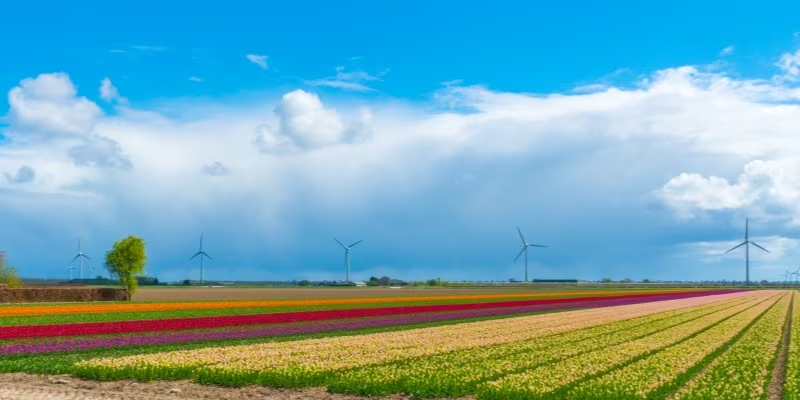Stay in the know on all smart updates of your favorite topics.
Amsterdam and Haarlem launch groundbreaking sustainable artificial turf pitch innovations
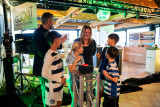
The pioneering innovations were presented of the Scale Up Future-proof artificial turf pitches project, a collaboration between Amsterdam and Haarlem focused on sustainable artificial turf pitches. Over the next few years, more than 250 sports pitches in both cities will be transformed into circular, energy-generating and climate-adaptive sports venues. These artificial turf pitches can not only generate and store energy, but also involve smart water management. An approach that is globally relevant for urban sports infrastructure.
Three consortia collaborate on the sport pitch of the future
The three selected consortia Antea Sport, EnergieVeld and GOO4iT together comprise more than 15 market players. They join forces within this innovation partnership, where there is room for long-term collaboration, co-creation and scalable innovation. The pioneering solutions will make it possible to cool down sport pitches on warm days, help dispose of and collect rainwater, make the pitches more pleasant for the users and possibly even generate energy for the surrounding area. Find out how these innovations are shaping the sport pitch of the future here.
Two municipalities: joint procurement
The Scale Up Future-proof artificial turf pitches project is a unique collaboration between two municipalities and market players. The municipalities jointly procure pooling their purchasing power and use an innovation partnership to challenge the market to test and scale up innovative and sustainable solutions. In doing so, the solutions are also scalable and transferable to other cities in the Netherlands and Europe.
From prototype to pilot fields
The first prototype fields will be constructed in Amsterdam and Haarlem in 2026, in different capacities and combining multiple innovations, where they will be extensively tested and monitored for a year. Successful concepts are then scaled up to full-scale pilot pitches and tested and monitored for another year. This will form the basis for the new standard of sustainable sports pitches, with potential for adoption in other cities around the world. At the same time, existing pitches are already being improved with the most sustainable solutions available, making an immediate impact from the start. The project thus shows how cooperation between municipalities and market players can lead to innovative, climate-proof sports infrastructure with international relevance.
Join us
This project provides cities worldwide a blueprint for sustainable, smart, and future-proof artificial turf pitches. Interested municipalities and industry partners can get in touch and subscribe to our news updates by sending an e-mail to: sportveldvandetoekomst@amsterdam.nl.
Ondernemers met duurzame oplossingen gezocht voor aanbesteding
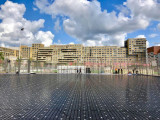
De aanbesteding Scale Up Toekomstbestendige kunstgrasvelden is gepubliceerd. Met het project dagen de gemeenten Amsterdam en Haarlem ondernemers uit om duurzame oplossingen op kunstgras sportvelden toe te passen. De inschrijving hiervoor sluit op 17 juni 2024 om 14.00 uur.
De genoemde gemeenten zijn op zoek naar partijen met innovaties op het gebied van: duurzame energie, klimaatadaptie, circulariteit of slim en schoon bouwen. De duurzame oplossingen willen ze vervolgens toepassen bij de vervanging en nieuwe aanleg van kunstgras sportvelden. Naar verwachting staan er de komende tien jaar meer dan 200 velden op het programma. Hiermee wordt verwacht een grote bijdrage te leveren aan de doelstelling van de gemeenten Amsterdam en Haarlem om in 2050 een klimaatneutrale stad te zijn.
Doe mee!
Doe mee met dit project en schrijf je in voor de aanbesteding op Mercell.
Kijk voor meer informatie op de website van het project of stel je vraag door een e-mail te sturen naar sportveldvandetoekomst@amsterdam.nl.
Disclaimer: Het project wordt medegefinancierd door het LIFE Programme van de Europese Unie. Noch de Europese Unie, noch de subsidieverlenende autoriteit kan voor de inhoud van het project verantwoordelijk worden gehouden. Aan dit artikel kunnen geen rechten worden ontleend, de aanbestedingsdocumenten zijn leidend.
Ondanks congestie toch bedrijvigheid op Schiphol Trade Park

Wat in oktober 2020 begon als een urgent probleem – in het gebied waar Schiphol Trade Park in ontwikkeling was was geen extra transportcapaciteit meer mogelijk en de geplande bouw en uitbreiding moest noodgedwongen stoppen – is inmiddels opgelost. Onze baanbrekende virtuele netoplossing is daar nu namelijk ruim twee jaar in werking, en met succes: de bedrijven op Schiphol Trade Park zijn operationeel, breiden uit, en elektrificeren ondanks de netcongestie in het gebied.
Congestie op Schiphol Trade Park
Een blik op de congestiekaart maakt duidelijk dat Schiphol Trade Park in een door congestie grotendeels op slot gezet gebied ligt. Op het middenspanningsnet is geen extra capaciteit beschikbaar voor het transporteren van elektriciteit. Dat betekent dat er niet meer ontwikkeld wordt: een bedrijf krijgt namelijk wel een aansluiting, maar geen transportcapaciteit. Dit is niet alleen een probleem voor de bedrijven die zich hier willen vestigen, maar ook voor gebiedsontwikkelaar SADC (Schiphol Area Development Company), dat in 2020 nog de ambitie had om het meest duurzame business park van Europa te worden (en in 2023 door de BREEAM-NL Outstanding certificering zelfs het meest duurzame logistieke business park van de wereld is!). De ontwikkelaar wilde voorkomen dat bedrijven afzonderlijk een eigen oplossing zochten en er een wildgroei aan gasgeneratoren met de daarbij behorende uitstoot zou ontstaan. SADC zag dat dit slimmer, goedkoper en duurzamer kon, door op een innovatieve manier partijen te verbinden en te laten samenwerken. Bedrijven kunnen daardoor bouwen, uitbreiden en elektrificeren. Over de aanloop naar het project lees je meer op onze projectpagina.
Een doorbraak: de virtuele netoplossing
Alle bij de coöperatie aangesloten bedrijven delen hun eigen transportcapaciteit met elkaar. Zo maken ze slim gebruik van de gereserveerde ruimte. STELLAR Grid Management leest continu de slimme meters uit en stuurt de energiesystemen (zoals zonnepanelen, energie-opslag, en generatoren) achter de meter aan. Bovendien zorgen we voor de financiële afhandeling van deze aansturing, zodat de deelnemende bedrijven elkaar compenseren voor gebruikte elektriciteit en voor het beschikbaar stellen van hun stuurbare energiesystemen.
De resultaten van een jaar virtueel net
Het virtuele net is twee jaar actief. In het eerste jaar sloten zich nog gefaseerd bedrijven aan bij het collectief. De resultaten van dat jaar zijn voorspoedig, maar niet helemaal volledig.
Nu we een tijdje bezig zijn, delen we met vertrouwen onze resultaten. Voor deze resultaten keken we naar 2023. Zo nemen we dus alle seizoenen en bijbehorende energievraag mee in deze analyse.
Het collectief wordt goed benut: in 2023 is 2.104 MWh aan elektriciteitslevering extra mogelijk gemaakt door het delen van de capaciteit binnen het virtuele net. Zonder deze slimme oplossing hadden heel veel stuurbare energiesystemen, zoals batterijen en generatoren, deze elektriciteit moeten leveren. In het collectief nemen in totaal zeven bedrijven deel die weinig of geen netcapaciteit hebben. Dankzij deze slimme oplossing kunnen de bedrijven gebruikmaken van de beschikbare ruimte en opwek van de buren.
Om zeker te zijn van voldoende elektriciteit binnen de gestelde limieten hebben meerdere bedrijven geïnvesteerd in batterijen en gas- en dieselgeneratoren. Het collectief gebruikt die middelen als er een tekort aan capaciteit is. De generatoren dienen vooral als achtervang. Voordat STELLAR deze aanstuurt, bepaalt het systeem of de aangesloten batterijen kunnen voorzien in het verwachte moment van schaarste. Als de batterij niet voldoende is, schakelt STELLAR automatisch een generator in. In heel 2023 is ertwee keer een generator ingezet om binnen de netlimiet te blijven, voor in totaal 2 uur. Toen de generatoren aangingen waren de batterijen nog niet operationeel, anders waren die generatoren waarschijnlijk niet nodig geweest.
Zonder virtueel net hadden deze partijen moeten investeren in elk een eigen generator (en eventuele back-up generator). Die generatoren hadden gezamenlijk tot 31.000 draaiuren gemaakt. Dat is gelukkig voorkomen. Er is hiermee voor 468.000 m3 minder gas verbruikt, en daardoor is er lokaal 842 ton CO2 minder uitgestoten door generatoren.
Het virtuele net is dus een solide oplossing voor congestiegebieden. Dankzij de slimme aansturing zijn zeven bedrijven operationeel die zonder de virtuele netoplossing hadden moeten uitwijken naar een andere locatie in Nederland of daarbuiten,terwijl een aantal van hen al aan het bouwen was. En er is een enorme hoeveel CO2-uitstoot voorkomen.
De toekomst van Grid Management
We zijn trots op ons virtuele net bij Schiphol Trade Park. We horen ook een enorme urgentie in de markt: veel partijen worstelen met netcongestie en zoeken naar een vergelijkbare oplossing. Maar de toekomst van Grid Management is niet hapklaar. Het project bij Schiphol Trade Park is een pilot, en de voorwaarden van een standaard contractvorm voor een dergelijke collectieve oplossing (groeps-transportovereenkomst) zijn nog niet definitief vastgesteld.
Niet alleen bij Schiphol
Schiphol Trade Park is zeker niet de enige plek in Nederland waar sprake is van congestie. Eerder dit jaar lanceerden we onze oplossing bijvoorbeeld ook in het Zwolse Hessenpoort. Heb jij ook last van congestie? We denken graag met je mee. Neem contact met ons op.
Demoday #22: How can we continue to facilitate homeowners in driving the energy transition?
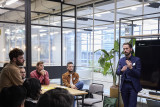
Grid congestion is becoming increasingly significant and will start to pose a problem in the low-voltage network in the coming years. This will prevent homeowners from transitioning away from gas, result in low efficiency for their solar panels, and could make it impossible to have a charging station at their doorstep. Alliander does not want to hinder the energy transition. Therefore, they are looking for a way to involve homeowners in the issue of grid congestion and provide solutions that are still feasible with a crowded grid.
In the energy work session on the 14th of December, Wouter van Rooijen (Alliander) discussed the challenges related to grid congestion. From 2030 onwards, it is expected that a significant portion of the low-voltage network will experience both over- and under-voltage. While the network will be reinforced as quickly as possible, the lack of labour capacity is also prompting the consideration of alternative solutions.
The solution that emerged from Wouter's co-creation process was WijkWise. In this work session, Wouter aimed to validate the WijkWise concept and find parties that could contribute to its development and market implementation. Dave van Loon from Kennisland moderated the session.
WijkWise – Understanding the neighbourhood's grid situation
The WijkWise concept focuses on three problems:
- The growth of grid congestion at low-voltage
- Homeowners' uncertainty about making sustainable investments. For instance, because they may not know if their solar panels will yield a good return.
- Homeowners' lack of awareness regarding the impact their choices have on the stability of the grid.
The proposed solution:
"With WijkWise, Alliander continues to facilitate homeowners in making their homes more sustainable. Alliander does this by providing insight into the neighbourhood's grid situation and recommending the best investment. Residents can make informed choices that contribute to payback time, comfort, and certainty. A good choice benefits both the homeowner and the grid operator."
The idea is to provide more insight into the neighbourhood's grid situation and offer tailored advice for home sustainability. This way, homeowners can determine whether they should invest in insulation, a heat pump, or solar panels.
Alliander does not want to develop this concept alone, but is seeking partners to bring this concept to market.
Discussion
After the concept presentation, a brief discussion followed. The main questions raised were:
- Can providing insight into the neighbourhood's grid situation have (negative) effects on the housing market?
→ They don't know yet; further investigation is needed. - Can this data be shared freely?
→ The data shared will be at the neighbourhood level (transformer level) and not in real-time (monthly). If there is user data involved, consent must be obtained. - What behaviour change do you expect?
→ That, during the investment moment, consideration will be given to the grid situation for the most advantageous investment.
After the discussion, we worked in groups with the Empathy Canvas from Kennisland to view the WijkWise concept from the perspective of the homeowners. This tool helped us really view the problems from the perspective of a homeowner.
Empathy Mapping
In three groups, we delved into the homeowner's situation. The recurring themes in the empathy maps were:
- A sense of unfairness for the homeowner. They invest in sustainability and are rewarded with grid congestion problems.
- A feeling of uncertainty for the homeowner. They want assurance that their investment will yield results.
- Little trust in the grid operator and the government. First, everyone had to get solar panels, and now suddenly it doesn't fit, and net metering is being discontinued (or not?)
- Limited understanding by homeowners because they find it very complicated and don't want to delve into it. It's not an urgent problem for them.
- Collaboratively seeking solutions can be very positive, but can also lead to friction.
Alliander plans to take the next steps with this concept in 2024. In 2024, they are planning to do the follow-up research, make the minimal viable product, and launch the first version of the product at the end of the year.
Do you know of any stakeholders that absolutely need to be involved, or would you like to be involved in the implementation of the WijkWise concept? Please contact Noor at noor@amsterdamsmartcity.com. Special thanks to Wouter and Dave for this interesting session.
De energietransitie vraagt om eerlijkheid en duidelijke randvoorwaarden
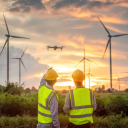
De energietransitie is een van de grootste uitdagingen van deze tijd. Nederland heeft tot nu toe goede stappen gezet, maar om de klimaatdoelen te behalen, moet er nog een flinke inhaalslag worden gemaakt. Wat is er nodig en wat is de rol van de overheid in deze transitie? Sander Oudmaijer en Ariën de Klerk, beiden werkzaam bij Monitor Deloitte, doen aanbevelingen gebaseerd op onze onlangs gepubliceerde Energie Transitie Monitor.
We hebben in Nederland de afgelopen decennia goede vooruitgang geboekt, máár om de klimaatdoelen van 2030 en daarna te halen, is er nog een flinke versnelling nodig, constateren Sander Oudmaijer, Director bij Monitor Deloitte, en Ariën de Klerk, Manager bij Monitor Deloitte. Ze baseren zich op de Energie Transitie Monitor (ETM) die Deloitte begin september gepubliceerde. Om de juiste keuzes te kunnen maken, hadden professionals uit de industrie, academici en beleidsmakers al langer behoefte aan een helder beeld en een gemeenschappelijke feitenbasis over de status van de energietransitie. De ETM biedt die huidige stand van zaken over de energietransitie in Nederland en laat zien wat ons te wachten staat.
Omvang van de Nederlandse emissies
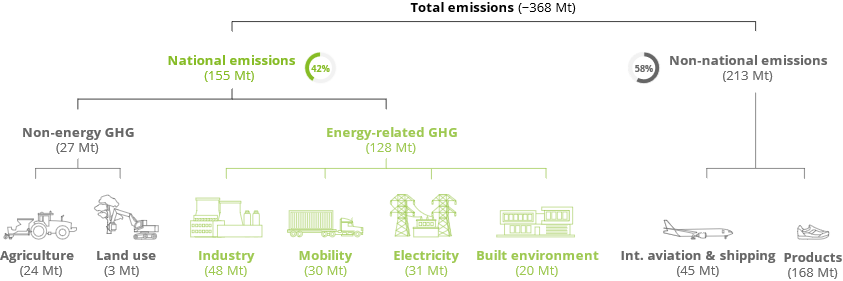
De Klerk: “Tot nu toe hebben we keuzes gemaakt die relatief weinig pijn deden. Het grootste deel van de vooruitgang boekten we door laaghangend fruit te plukken, en mee te liften op ontwikkelingen die zich sowieso al voordeden. Denk aan het terugdringen van de industriële productie, efficiëntiemaatregelen en het feit dat we meer gebruik maken van bestaande technologieën zoals zonne- en windenergie. Om de klimaatdoelen te halen, ontkomen we er niet aan om nu ook keuzes te gaan maken die pijn doen.”
Oudmaijer: “Om de doelstellingen uit het klimaatakkoord in 2030 te halen, moeten er 570 laadpalen per dag worden geïnstalleerd en moeten er tien emissievrije bussen per week bij komen. Daarbij zouden we de verwarming van 600 huizen per dag moeten elektrificeren en moeten we tot 2050 om de dag één windmolen bouwen. Om dat voor elkaar te krijgen zullen er fundamentele keuzes gemaakt moeten worden.”De Klerk: “De pleisters om kleine tekortkomingen te repareren raken op.”
Vertel het eerlijke verhaal
De rol van de overheid in de energietransitie is dan ook van groot belang, stellen Oudmaijer en De Klerk. De overheid schept de voorwaarden die nodig zijn om de doelen te kunnen behalen, en ze draagt tegelijk bij aan het vertellen van 'het eerlijke verhaal'. Oudmaijer: “Het is belangrijk dat er nu subsidies zijn voor elektrische auto's en allerlei duurzame maatregelen, maar dat houdt een keer op. De energietransitie gaat zowel burgers als bedrijven geld kosten. Dat eerlijke verhaal moet verteld worden.”
"De vraag is niet of we nog een windmolenpark gaan bouwen op zee óf op land, het moet allebei."
De Klerk: “Bovendien is het nog vaak een of/of-discussie, maar de vraag is niet of we nog een windmolenpark gaan bouwen op zee óf op land, het moet allebei. Daarbovenop zijn investeringen in andere vormen van energievoorziening, zoals bijvoorbeeld kernenergie, noodzakelijk. Ook dat is het eerlijke verhaal: het is en/en.”
Oudmaijer: “De ETM laat duidelijk zien wat er moet gebeuren. Een belangrijke vraag is vervolgens hoe je gemeenschappen meekrijgt met al deze ontwikkelingen. Eigenlijk wil niemand een windmolenpark in zijn achtertuin. Als overheid moet je daarom nadenken hoe je dit zo goed mogelijk kan faciliteren. Wellicht moeten de voordelen van wind- en zonne-energie op een directere manier terugvloeien naar bepaalde gemeenschappen, zodat zij enthousiaster worden en meer betrokken raken. Zoals bij het windpark Veur de Wind, waar omwonenden meeprofiteren van het park, in plaats van dat het ze met dwang werd opgelegd.”
De Klerk: “Al dit soort zaken vragen om een heldere visie vanuit de overheid. Het moet voor investeerders en bedrijven duidelijk zijn wat ze van de overheid kunnen en mogen verwachten en hoe die hen kan helpen. De overheid schept duidelijke randvoorwaarden voor de langere termijn. Als we om de dag een windmolen willen bouwen, dan moet onder meer de termijn om een vergunning te krijgen voor de bouw van een windmolenpark vele malen sneller dan nu het geval is.”
Win-winsituaties
We hebben in korte tijd veel werk te doen. Niettemin zijn volgens Oudmaijer en De Klerk de juiste bouwstenen aanwezig om dit succesvol aan te pakken. Denk bijvoorbeeld aan een innovatiecultuur, een al lang bestaande industriële sector en een toonaangevend onderwijssysteem. De uitdaging die voor ons ligt, is om al onze capaciteiten op vernieuwende wijze te orkestreren en de transitie te versnellen op een manier die samenleving, klimaat en economie ten goede komt.
De Klerk: “Wat je niet wilt is dat bedrijven hun deuren in Nederland sluiten en in een ander land met dezelfde uitstoot verdergaan. De vraag is dus hoe we ervoor zorgen dat we economische daad- en draagkracht houden zonder daarbij onze verantwoordelijkheid ten aanzien van het klimaat te verzaken. Oftewel, we moeten opnieuw kijken wat onze rol is in de energietransitie en waarin we willen investeren als B.V. Nederland. Belangrijk is dat die keuzes passen bij de capaciteit van ons land en hetgeen waar we goed in (willen) zijn.”
Oudmaijer: “We zijn in Nederland al een tijd bezig met waterstof, mede om de grote industrie te faciliteren. Als we ervoor kiezen om daar vol op in te zetten, dan zou de overheid met een duidelijke visie moeten komen. Stil staan bij vragen als: Op welke type waterstofdragers zetten we in? Waar willen we waterstof wel en niet voor gebruiken, en hoe gaan we dat als overheid faciliteren? De overheid zal een faciliterende rol moeten pakken, zodat bedrijven een afgewogen investeringsbeslissing kunnen maken. Bijvoorbeeld door te zorgen dat er sneller vergunningen worden afgegeven, het duidelijk is waarvoor we het willen gebruiken en door locaties aan te wijzen waar fabrieken gebouwd kunnen worden.”
De Klerk: “Een ander idee is om het North Sea Consortium te versterken door een visie en een uitvoeringsplan te creëren. Dat positioneert de Noordzee als een krachtcentrale van de Noordwest-Europese offshore op het gebied van windenergie- en waterstofproductie. Op die manier zet je Nederland neer als krachtpatser en dient het als een mondiale blauwdruk voor een succesvolle energietransitie.”
Oudmaijer: “Begin hiermee door als overheid een duidelijke visie neer te leggen en samen met het bedrijfsleven pilotprojecten te starten om uit te vinden wat wel en niet werkt. Een iteratief proces waarbij overheid en bedrijfsleven hand in hand de meest succesvolle initiatieven verder brengen, waardoor duidelijk wordt wat daadwerkelijk impact oplevert. De tijd om het laaghangend fruit te plukken is voorbij, het gaat nu om heldere keuzes en concrete acties!”
The next step for Local Energy Systems
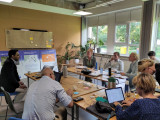
Thursday, the 30th of August, we had the first follow-up session about Local Energy Systems (LES) since the Transition day session in June. Over the summer Omar Shafqat (HvA, ATELIER), dr. Renée Heller (HvA), and Lennart Zwols (municipality of Amsterdam), have worked on finding a solution to the barriers to scaling up LES. They focused on the barrier of sharing information and learnings of LES projects. In this session, Omar presented a framework that could help overcome this barrier.
A barrier to scaling up LES: Lack of knowledge
In the previous session, we discussed how the difficulty with starting a new LES project is often that the information on how to do this is not readily available. Many pilots have been done, or are still ongoing, and there are definitely reports on the learnings of these pilots. Unfortunately, these learnings are not always available to everyone, and if they are, quite difficult to find and aggregate.
Lennart therefore proposed to make a framework in which we can gather all the information on LES pilots and projects, so we have a central place for the collecting and sharing of information. Omar and Renée have created this framework, which Omar presented in this session. The framework has three objectives:
1. Collecting the learnings of the pilots in one place.
2. Defining the gaps in our knowledge.
3. Creating a starting point for people who want to create their own LES.
Definition of a Local Energy System
To properly create a framework in which various information of relevant LES projects can be collected, it was necessary to have a good definition of a LES. Omar presented the definition as follows:
A local energy system is an interactive, non-linear system that must contain:
- Local generation
- Controllable demand
- Storage
- Energy Management Systems
- Energy communities
Hans Roeland Polman (AMS) commented that he was missing the infrastructure in this definition. Omar clarified that the lines between these five entities symbolize the infrastructure and that it is indeed an important component of LESs.
When we speak of LES it is always a balancing act. Different stakeholders have different objectives for implementing a LES, maximizing renewables, minimizing costs, flexibility/congestion, grid dependence, etc. This implies that the aspects of a LES are of differing importance to stakeholders, which is important to take into account with information gathering and sharing.
The first version of the framework for collecting information
After discussing the definition of LES, we dived into the framework. The goal of this framework is to have one format in which we collect information and learnings from all the LES pilots and projects (starting with the ones in our own network). This will allow us to speak a common language, easily compare projects, identify stakeholders and their interests, see where the knowledge gaps are, and more easily find specific information about LES.
Note: This framework is not the interface for the end-user. The framework should be used to catalogue information and learnings so that we have the information on all the different projects in the same format. We can then use this to build a user interface that end-users can interact with. How to best do this is still a topic of discussion.
The framework is presented below. On the x-axis, you can see the time scale. On the left you have the long-term (planning) phase, and on the right the short-term (management) phase.
On the left side, you can see the four areas in which the framework is divided:
- Policy
- Energy markets
- Energy systems
- Community/user aspects
The colour-coded third dimensions show which blocks relate to certain topics of interest, and should have information added on this topic. The topics of interest that have been added now are:
- Congestion
- Energy balance
It might be interesting to add others as well.
It was suggested by the group that electricity/heating might also be an interesting topic to add. Hans (AMS) also suggested that it would be interesting to add information about local infrastructure, such as a local heat network.
Discussion and questions
After the presentation of the framework a discussion followed. Many questions were raised which require further examination. A few of the key questions were:
- What should the scope be of this framework? Are we just looking at our own region, or do we want it to be used on a much larger scale?
- How do we connect to the other organizations and projects to this framework, and refrain from doing double work?
- Who is the owner of this framework and will keep it up to date?
- To make this framework usable for project managers, it should have a clear template that can be filled in. Who is going to make this, and how do we ensure that project managers of LES projects fill this in?
Next steps and call to action:
There are still many questions that need to be answered, and we will continue the research and learn by doing. We will start with the ATELIER and the LIFE project, to see if we can put them into this framework. This will be done by Omar (HvA, ATELIER), and Hans (AMS, LIFE). They will also create the first version of a template in which the information can be collected so that project managers can fill out this information. This will then be tested with the project managers of the LIFE project to see if the template and framework are indeed workable.
This will give a good starting point to see if the framework is suitable for the collection of information and learnings of LES projects. However, it will be far from complete. The ATELIER and LIFE projects don’t contain all the topics to properly test the framework and create templates for everything. We therefore need more partners with LES projects that can help test and develop this framework.
So if you are working on a Local Energy System project, and you would like to help further develop the framework, by giving feedback on the framework itself or using your project to validate the effectiveness of the framework, please let us know.
Transition day 2023: Local Energy systems, scale up, scale up, scale up

Energetic for energy
The technology is here. People and organizations are there. We have a lot of learnings from innovation pilots like Live and Atelier: we're all set. And yet, scaling up local energy systems like Live and Atelier seems to be incredibly difficult. What are the obstacles and barriers to scaling up these initiatives? These questions were the focus of the working session "local energy systems, scale up, scale up, scale up”. The partners unanimously recognized the issue of scaling up as it affected all of them, and enthousiastically engaged in the work session.
Barrieres for upscaling
Together we searched for the actual challenges where local energy systems can be a solution, and the barriers for upscaling. We looked at the first actionable follow-up steps to achieve the required upscaling.
We chose a <em>chair battle</em> as work format and had an open and honest conversation about the challenges we face. It was fascinating to see that sometimes the different stakeholders, despite having the same goal, cannot come to an agreement and this can lead to considerable frustration.
What we learned?
A lot! The picture report says more than a thousand words, but in short:
· We can only solve this challenge together; and that’s difficult
· Citizens and companies often do not know where to go and often do not know the existing possibilities
· We have the same goal, but there are many different interests
· The solutions are already there
And now?
We will continue the topic with great energy in the coming period and try to set up a fixed program structure to keep the development up to speed.
Do you want to know more about this challenge? Please let me know. patricia@amsterdamsmartcity.com
Demo Day #20 : Upscaling ATELIER Buiksloterham

To mitigate climate changes and reduce CO2 emissions, the transition of the current energy system to a more sustainable and decentralized one is needed. In Amsterdam, the Buiksloterham demonstration project from ATELIER is paving the way for this transition. Buiksloterham is a Positive Energy District (PEDs) in practise, in which a local smart energy system and P2P trading governed by a citizen’s energy cooperation is implemented. The ambition of ATELIER/Amsterdam University of Applied Sciences is to research how to upscale and replicate this PED. For the Demo Day on the 16th of May, the Amsterdam University of Applied Sciences asked the Amsterdam Smart City network to discuss how we can learn from the Buiksloterham project to support replication and upscaling. Read through the most valuable outtakes from this session below.
What learnings to focus on?
Starting off, the participants pointed out that it would be most important to learn which choices have been made and why. Therefore, we need to keep track of these decisions and their outcomes. It was suggested to write down all the arguments for the choices made and create a matrix that shows what works or doesn’t work.
It would also be useful to make an impact assessment that shows how much CO2 and electricity is being saved a year. Another great source of information would be around collaboration, specifically with the network operator for example. How did the connection of the PED to the grid go and what learnings are to be gained from that collaboration wise?
Drivers for community involvement
Gathering the insights around community involvement would also be helpful. Danijela and Renée, from the Amsterdam University of Applied Sciences, explained how it has been difficult to get the community involved in the project. Based on the experience of the worksession participants, we concluded this is an issue in other local energy system projects as well. It would be great to investigate why this is the case and what the residents need/desire.
The participants suggest looking at the project from the (possible) resident’s point of view; Why would I want to live in a PED building? What’s in it for the residents?
There is a lot of focus on getting people on board with economic benefits, but is that actually what people want? This could also be connected to comprehensive wellbeing. What else can people benefit from by living in a PED and/or being involved in the community?
Local CO2 reduction vs national grid relief
The issue of getting people on board by promising lower energy costs brings up another question; Is this way of trading energy beneficial for the energy grid capacity? How would it work if we would all start trading energy?
A battery can be very useful for an energy community, for example. But batteries can actually put more load on the energy grid than needed and are therefore not always desirable when you look at it from the municipalities point of view. Local solutions for CO2 reduction and/or economic benefit could burden the national grid.
It is important to keep this in mind when creating the targets for a local energy system. In order to scale up the ATELIER project, it is therefore key to not only maximise economic value but also include other values. If the main focus is on creating economic benefit in order the gain the interest of the community, it is important to keep the effects on the national grid in mind.
New energy law
Finalizing the discussion, we shortly discussed the new energy law. This law says that you cannot own your own grid. Only the network operator can be the owner at the moment. This creates less flexibility and possibility since these network operators are obliged to provide a high certainty for the availability of electricity. The group suggested that the learnings from ATELIER might be helpful in influencing the change of this energy law. This would create more grid connection flexibility which would contribute to upscaling.
The discussion and collaboration around local energy systems and energy communities will be continued in the Amsterdam Smart City “Local energy systems” challenge. This article is written by Jessica van der Plas, former Programme Manager Energy & Circularity at Amsterdam Smart City.
From mid-june 2023, Noor Veenhoven joined the team as our new Programme Manager Energy & Circular. Want to know more about the local energy systems challenge? Reach out to Noor via noor@amsterdamsmartcity.com or leave a comment below!
New Smart Energy Community Event scheduled on October 11: in-person meetup.

Join our speed date and engage with 3 great speakers at the first in-person Smart Energy Community meetup on October 11th!
Topics Smart Energy Community October 11:
Home Energy Management Systems in practice
Now that we are installing more and more heat pumps and EV chargers in homes, there is more and more need for energy management. How does this work? How to deal with cyber security and what role do protocols play? ElaadNL developed its own showcase house where this is put into practice. Arjan Wargers of Flexiblepower Alliance Network & ElaadNL discusses the lessons learned.
Power pitch ATEPS: Energy and storage
ATEPS develops, builds and supplies systems based on batteries that store energy. Jos Theuns (ATEPS) explains how they make storage of sustainable energy accessible, safe and attractive through smarter management of electrical energy. Due to the modular construction of ATEPS systems, they are suitable for both small and larger customers.
Power pitch withthegrid: Teleport
How do you connect PV, wind, battery, EV chargers and heat pumps without losing your mind in all protocols and without cloud lock-in? Paul Mignot (Withthegrid) discusses their new innovation Teleport. This gives customers maximum insights and control over their assets in minutes.
Speed dating, networking & visit demonstration house
In the second half, connecting with other professionals is central. During these speed dating sessions, you will get to know fellow innovators, share project ideas and explore opportunities for collaboration. There will be ample opportunity for discussion after the meeting. At the same time, you can take a tour of ElaadNL's new demonstration home for smart energy services, where various smart devices are optimised for home energy management.
Energietransitie vereist betere afspraken over data

Digitale technologie en data zijn essentieel voor de energietransitie. In de energietransitie geldt: geen stroom zonder data. Digitale innovaties bieden uitkomst om vraag en aanbod van elektriciteit in balans te houden, binnen de beschikbare netcapaciteit. Zelf leveren ze ook een stroom van data op.
Tegenover de kansen die digitale technologie en data bieden voor de energietransitie, staan zorgen over bijvoorbeeld de zeggenschap van burgers over hun gegevens, de cyberveiligheid van de energievoorziening en de verdeling van lusten en lasten van een datagedreven energiemarkt.
In het rapport Stroom van data. Energiedata benutten voor een maatschappelijk verantwoorde energietransitie onderzoekt het Rathenau Instituut hoe data gebruikt kunnen worden voor een duurzame energievoorziening. Het rapport bevat een analyse van de concept-Energiewet en de afspraken voor data-uitwisseling die sectorpartijen zelf al maken. Vier case studies illustreren welke kwesties opspelen bij het gebruik van data voor de stroomvoorziening. De cases gaan over burgers die zich verenigen om lokaal energie op te wekken en te gebruiken, een virtuele energiecentrale, een platform voor balanshandhaving op het elektriciteitsnet en een platform om overbelasting op het net te voorkomen.
Hyperefficiënt zonnepark dankzij smart grid

In de polder in Schagen werken we in een innovatieve samenwerking aan het zonnepark van de toekomst: De Dijken. Dit park heeft niet alleen de nieuwste PV-panelen, maar ook plek voor mobiele batterijen. Dankzij die batterijen en ons Smart Grid Platform maken we hyperefficiënt gebruik van de beschikbare zonne-energie. In het artikel op onze website lees je meer over deze bijzondere samenwerking en onze ambitieuze toekomstplannen.
Terugkijken SES community digitale sessie congestiemanagement 2.0 en financieringsregeling
Op dinsdag 5 juli, organiseerde de werkgroep slimme energie systemen (SES) van de Provincie Noord-Holland, TenneT en Liander een digitale sessie voor de SES community. Hierin vertelde Liander over congestiemanagement 2.0 en gaf de Provincie inzicht in de aankomende subsidieregeling voor SES projecten.
Updates ontvangen van en/of meedoen aan de community? Mail naar cato.bechtold@hiemstraendevries.nl
Free KNX Smart Energy & IoT development workshop on June 28 – max 15 developers

KNX and FLEXCON2022 are hosting a free KNX Smart Energy & IoT development workshop on June 28, for 15 developers max.
Are you a developer who wants to build Smart Energy applications? Bring your RPi’s and other Linux devices and come to Pakhuis de Zwijger in Amsterdam on June 28th !
In this 'mini-hackathon’, you will get to understand the KNX IoT development approach. You will utilize a free client-development solution to interact with the KNX installation to build Energy Management solutions for a cleaner, smarter world. Connect heatpumps, EV's, batteries and solar panels to the smart grid!
The workshop is free of charge. We have only 15 spots available, so apply now! For more information and subscription to the KNX IoT workshop on June 28, check the link:
Free download: Kennisdossier duurzame energie (in Dutch)

Het rijk geïllustreerde Kennisdossier Duurzame energie (150 pagina’s) is een compilatie van 75 artikelen en blogposts over de energietransitie. Je kunt het via onderstaande link gratis downloaden.
Het bevat de volgende hoofdstukken:
1. Feiten om te onthouden
2. Bronnen van duurzame energie in Nederland
3. Openstaande keuzen: Vier scenario’s
4. Hoeveel zonnepanelen passen in Nederland
5. Energietransitie mogelijk dankzij de zonnecel
6. Van zonnepaneel naar zonnedak en zonnepan
7. Zonnepanelen kunnen (bijna) overal liggen
8. Recycling zonnepanelen: naar de maan en terug
9. Manieren om netwerkverzwaring te voorkomen
10. Smart grids: Waar techniek, digitale en sociale innovatie samenkomen
11. Samenwerken in een energiecoöperatie
12. Duurzaam maken van je woning: Voor jezelf en de aarde
13. Naar een rechtvaardige energietransitie
14. Zonder energieopslag geen energietransitie
15. Aardwarmte
16. Biomassa
17. Verwijderen, opvangen en opslaan van CO2
18. Kernsplitsing en kernfusie
19. Waterstof
20. Onze toekomstige energievoorziening
Circular strategies for mitigating surging critical metal demand
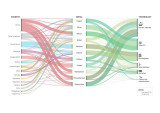
One of the biggest challenges for the transition to cleaner energy systems is the vast amount of critical metals required. But where do those metals come from, and what technologies are they needed for?
The Industries Team at Metabolic explored these questions and proposed circular strategies to reduce the critical metals demand significantly. Find out more about the project in the link below.
Marktconsultatie energievoorziening Amsterdam-West: de resultaten

De stad Amsterdam groeit hard, de samenleving digitaliseert én we willen zo snel
mogelijk overstappen op duurzame energiebronnen. Deze factoren samen veroorzaken letterlijk spanningen op het elektriciteitsnet, onder andere in Amsterdam-West.
In het voorjaar van 2021 organiseerde de gemeente Amsterdam daarom samen met netbeheerder Liander een marktconsultatie. Het doel: creatieve en innovatieve ideeën ophalen om ons elektriciteitsnet zo flexibel, efficiënt en toekomstbestendig mogelijk te maken.
Hieronder vind je een greep uit de behaalde doelen en resultaten:
· Het bedrijfsleven denkt oplossingsgericht mee over de uitdagingen rondom de
elektriciteitsvoorziening
· Verkenning en inventarisatie van technieken die een bijdrage kunnen leveren aan het
versterken van ons elektriciteitsnet
· Inzicht in de laatste stand van zaken betreffende bekende technieken
· Update van actieve marktpartijen op het gebied van flexibiliteit
De volledige terugkoppeling van de marktconsultatie vind je via de link onder dit artikel.
Vervolgstap: voorbereiding aanbestedingsproject
De marktconsultatie heeft er mede toe geleid dat netbeheerder Liander voldoende kansen en mogelijkheden ziet om de uitdagingen rondom de elektriciteitsvoorziening in Amsterdam-West succesvol aan te pakken. Het bedrijf is daarom gestart met de voorbereiding van een aanbestedingstraject.
Bijeenkomst aanbesteding Westhaven
In het verzorgingsgebied van verdeelstation Westhaven is sprake van congestie. Als tijdelijke oplossing zal Liander in dit gebied congestiemanagement toepassen totdat het netwerk verzwaard is. Om bestaande en nieuwe klanten, dienstverleners en marktpartijen te informeren over het oplossen van de congestieproblematiek en de aanstaande aanbesteding, organiseert Liander een informatiebijeenkomst.
U bent welkom op woensdag 23 maart van 15-17 uur in de PRODOCK-ruimte van Port of Amsterdam (Moezelhavenweg 9, 1043 AM Amsterdam). Met vragen over de bijeenkomst kunt u terecht bij Stef Lammers (stef.lammers@alliander.com).
Consultation on energy supply in Amsterdam-West: the results

The city of Amsterdam is growing fast, society is digitizing and there is an urgency to switch to sustainable energy sources as soon as possible. Together, these factors are pushing the electricity network to its limits, also in Amsterdam-West.
In the spring of 2021 the City of Amsterdam, together with grid manager Liander, organized a market survey. The aim was collecting creative and innovative ideas to make the electricity network in Amsterdam as flexible, efficient and future-proof as possible.
Below is a selection of the goals and results that were reached:
· The business community agreed to think along solution-oriented lines about the challenges surrounding the electricity supply
· An exploration and inventory of technologies that can contribute to strengthening our electricity network was made
· Insight into the latest state of affairs regarding known techniques was gathered
· An update of active market players in the field of flexibility was provided
All information about the market consultation can be found here
Next step: preparation of the tender
One of the results of the market consultation was that grid manager Liander now sees sufficient opportunities and possibilities to successfully tackle the challenges surrounding the electricity supply in Amsterdam-West. The company has therefore started preparing a tender process.
Meeting about Westhaven tender
There is congestion in the catchment area of Westhaven distribution station. As a
temporary solution, Liander will apply congestion management in this area until
the network capacity is enhanced. Liander is organising a meeting to inform
existing and new customers, service providers and market parties about solving
the congestion problem and the upcoming tender process.
You are kindly invited in the PRODOCK room of Port of Amsterdam (Moezelhavenweg 9, 1043 AM Amsterdam) on Wednesday 23 March from 3-5 pm. If you have any questions regarding the meeting, please contact Stef Lammers (stef.lammers@alliander.com)
📣 #Rethink #Energy for industry: Join us to co-develop an open source Shared Energy Platform.

📣 #Rethink #Energy: Internet of Energy, Digital Twins, Open Source !
Port of Amsterdam and SEP have joined FLEXCON2022. In anticipation of #FLEXCON2022, they will host a multiple-day Design Sprint: you are invited to join us to #Rethink #Energy for industrial scale!
Join us to co-develop the open source Shared Energy Platform. The kick-off is the webinar on 21 March, 15.30 - 17.00. Register now, and be part of the sustainable energy revolution.
We have set up a program with great speakers to discuss to the efficiency and resilience of energy production and grid systems:
- Arash Aazami (Unify.energy): Internet of Energy
- Wilbert Prinssen (Phase to Phase): Digital Twins
- Nicolas Höning (SEITA - Open software for energy flexibility): Open Source and Smart Energy
- Derek Hardwick (Ampact Consulting): Design Sprint fundamentals
Our hosts:
- Thomas Hermans – Port of Amsterdam
- Robin Schipper – Shared Energy Platform
Please note: the webinar will be in English.
Register here for the kick off on 21 March 15.30 - 17.00: Subscription form.
Programma van Demodag #15 Energie & Circulair
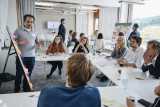
Volgende week donderdag 10 maart vindt de eerste demodag van 2022 plaats. De thema’s Energie en Circulair staan centraal, en het programma is inmiddels rond. Er staan weer mooie initiatieven en complexe vraagstukken op de planning.
Demodagen zijn onderdeel van ons innovatieproces en bedoeld om de voortgang van verschillende innovatieprojecten te stimuleren, hulpvragen op tafel te leggen, dilemma's te delen en anderen te betrekken bij projecten of uitdagingen. Meer informatie over wat de demodagen precies zijn en waarom je mee wilt doen, vind je hier.
Klinkt het programma interessant? Je bent meer dan welkom om aan te sluiten. Laat het ons weten in de comments!
Pitches:
SmartHoods
SmartHoods is een holistische aanpak om zelfvoorzienende buurten te realiseren. Dit concept is ontwikkeld door Spectral, Metabolic en de VU. Florijn van Metabolic is nu bezig dit concept zelfstandig verder te brengen. Zijn missie is om de meest leefbare en duurzame wijken te realiseren en vraagt de hulp van het netwerk om hieraan bij te dragen.
Green Light District / New Bauhaus - Gemeente Amsterdam / Hogeschool van Amsterdam
Het Green Light District project is opgezet om delen van de binnenstad en de Wallen te verduurzamen. De volgende stap voltrekt zit binnen de New Bauhaus oproep van de EU-commissie. Gemeente Amsterdam vertelt waar ze nu mee bezig zijn en nodigt het netwerk uit om mee te denken.
De Circulaire Monitor - Gemeente Amsterdam
De eerste versie van de Circulaire Monitor Amsterdam is een feit! Tijdens de Week van de Circulaire Economie is deze gelanceerd. Voor het eerst hebben we een totaalbeeld van alle materialen die in, door en uit de stad stromen, inclusief lokale productie en consumptie. Daarnaast hebben we berekend wat de milieueffecten van deze materiaalstromen zijn. Een game changer in onze journey naar een circulaire stad! Welke data vind je terug in deze monitor en wat kunnen wij ermee?
Werksessies:
De maatschappelijke kant van Smart Grids - Hogeschool van Amsterdam / Gemeente Amsterdam
Om de toenemende congestie op het energienet op te lossen, komen we met oplossingen als flexibilisering, energieopslag en energyhubs. Een slim energienet wordt nu vooral gedreven door acute problematiek. Maar hoe kunnen we deze innovaties breder maatschappelijk benutten? Wat is de sociaal-economische impact van smart grids en wat is er nodig om die te bevorderen?
Macht in de energietransitie - DRIFT
Minder macht bij grote bedrijven, meer macht voor bewonersorganisaties; hét gevolg van decentralisatie van productie en distributie, zeggenschap, eigenaarschap en winst en (overheids)sturing. Waar gaat de macht heen? Hoe wordt er met deze nieuwe macht omgegaan? En hoe kunnen we de impact ervan in goede banen leiden?
Circulaire Energietransitie
Een belangrijke stap in het verduurzamen van de regio is het circulair maken van alle technische maatregelen die voor de energietransitie worden ingezet. Denk aan windmolens, zonnepanelen, warmtepompen, of isolatiemateriaal. De angst bestaat dat een circulaire energietransitie tot vertraging of extra hoge kosten kan leiden. Toch zien we gelukkig al veel mooie initiatieven in ons netwerk en dit willen wij verder aanjagen. Waar moeten we dan beginnen?
Smart Energy Systems: een integrale en schaalbare weg naar duurzame bedrijventerreinen
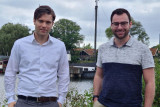
Door de bedrijven op bedrijventerreinen samen te laten werken aan integrale verduurzaming kan er op grote schaal duurzame energie opgewekt worden en CO2-uitstoot voorkomen worden. Samen met Greenchoice werken we aan een slim nieuw product: Smart Energy Systems.
CO2-uitstoot, onbenutte daken en netcongestie
Bedrijventerreinen zijn grootverbruikers van elektriciteit en bieden met hun grote dakoppervlakten ongekende mogelijkheden voor duurzame energieopwek. Toch wordt er op dit moment nog lang niet maximaal ingezet op de verduurzaming van deze gebieden. En als het al gebeurt, wordt kennis en kunde niet gedeeld, en worden oplossingen niet integraal op het hele terrein uitgevoerd. In plaats van samenwerken wordt er ingezet op de verduurzaming van één pand zonder te kijken naar de mogelijkheden om samen te verduurzamen, waar dan ook het teveel aan opgewekte energie teruggeleverd wordt aan het energienet. Dat verergert de al bestaande problemen met netcongestie.
Smart Energy Systems
In Smart Energy Systems hebben deelnemende bedrijven de keuze uit een ‘menukaart’ aan maatregelen. Daarop staan opties variërend van het plaatsen van zonnepanelen tot inzicht in verbruik tot het timen van je verbruik met je eigen opwek. Door die integrale aanpak en omdat meerdere bedrijven op het terrein tegelijkertijd verduurzamen kan er meer en sneller worden verduurzaamd.
Plug and play
Vanaf eind oktober begint de pilot bij drie bedrijventerreinen. De verwachtingen zijn hoog. Niet alleen voor de deelnemende bedrijventerreinen, maar ook voor toekomstige deelnemers. Door de ontwikkelingen op de markt goed in de gaten te houden en een vinger aan de pols te houden bij de pilotpartijen werken we aan de uitbreiding van de menukaart met nog meer duurzame en rendabele maatregelen, een gepersonaliseerde roadmap per terrein en een kopieerbare standaard voor nog meer impact.
Stay up to date
Get notified about new updates, opportunities or events that match your interests.
